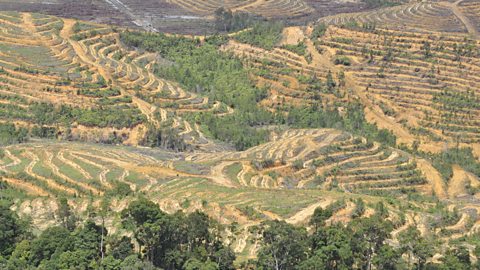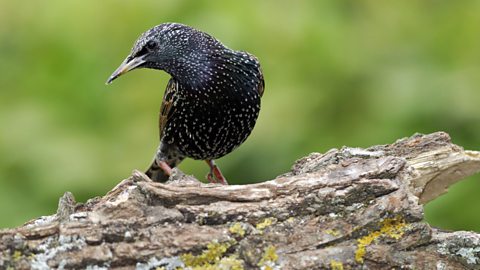How do human activities impact on ecosystems?
The changes caused by human activities have consequences for the bioticLiving elements of an ecosystem, such as plants and animals. and abioticNon-living elements of an ecosystem, such as climate, temperature, water, and soil type. parts of ecosystems. Changes have been particularly rapid in the last 50 years. Today, the greatest changes are taking place in developing countries.
On a small scale, a tree may be cut down to let more sunlight into a garden. The tree can no longer provide birds and insects, together with worms and organisms that live among the tree's roots, a place to live.
On a large scale, natural vegetation is removed and replaced with either by crops for food, the production of biofuels, grazing animals, or to provide room for the houses in which people live. This has altered the food webs and nutrient and energy cycles of ecosystems across the Earth.
- In the UK, much of the temperate deciduous forest has been removed for farming and to provide room for towns and cities. Today, of the forest areas which remain, many have become tourist attractions.
- In the United States much of the temperate grassland has been removed to grow cereals.
- In the Kalahari Desert in Botswana, bushmen traditionally live by hunting and gathering the produce of the desert.
- In the Mediterranean, the growth of tourist resorts and demand for water puts the natural ecosystem under pressure.

Often, changes to ecosystems are unintended. For example, human waste (such as household and industrial waste) enters natural ecosystems, and sometimes this waste can build up to harmful levels.
Human activities such as harvesting plants and hunting animals can unbalance the flows and cycles within those ecosystems. Tree-felling may lead to soil erosion and a loss of habitat. Lack of shade and moisture in the soil can result in desertification. Over-fishing from oceans can cause species to become threatened and can harm food webs.
Introduced species
Introduced species are plants and animals that live in a place where they are not found naturally. They have been introduced, either deliberately or accidentally, by human activities. Often they thrive in their new ecosystems, surviving and reproducing better than native species. As a result, native species cannot get the resources they need, and their numbers tend to decrease. The European starling provides a good example:
- 100 European starlings were released in New York in the 1890s
- today there are more than 200 million of these birds in North America
- their success has destroyed grain and fruit crops and out-competed native birds for nesting sites
- because the native birds can't breed, their numbers decrease
It should be noted that not all introduced species cause problems.
